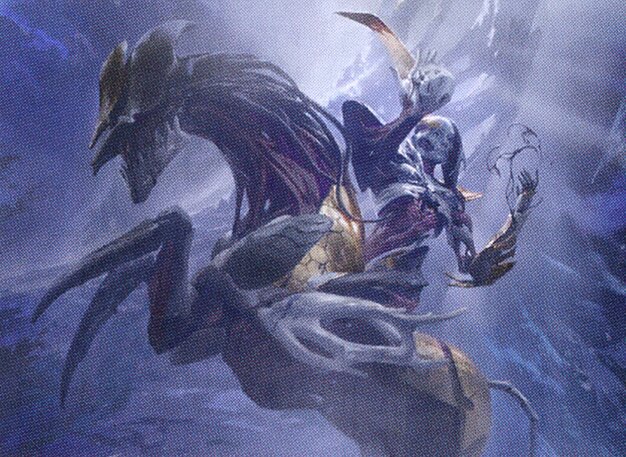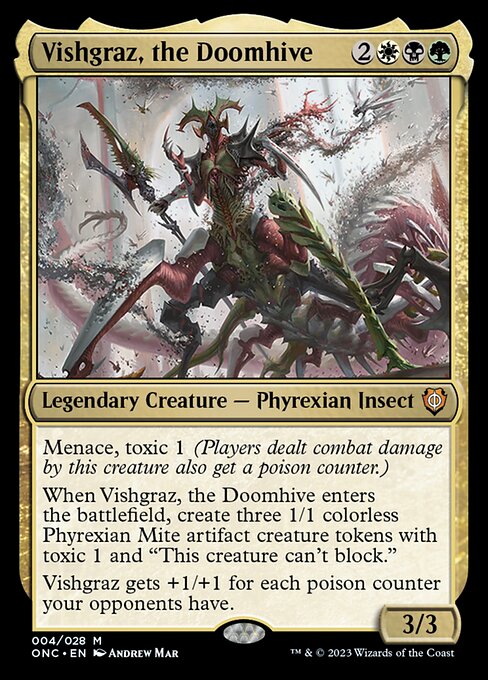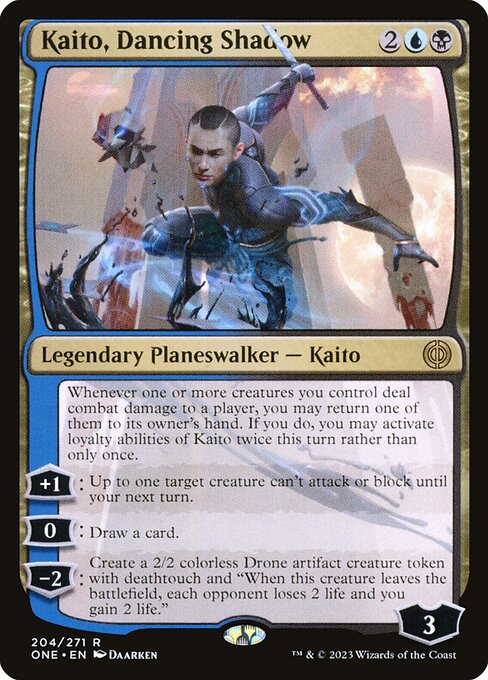Deck & Commander Strategies

Kaito, Dancing Shadow
Utilize combat damage triggers to bounce creatures, activate planeswalker loyalty abilities twice for control and card advantage, and generate toxic drone tokens to chip away at opponents.

Ria Ivor, Bane of Bladehold
Lead aggressive attacks with a swarm of mites generated from battlecry and damage prevention mechanics, leveraging incremental board presence to overwhelm opponents.

Vishgraz, the Doomhive
Deploy an unblockable menace that grows with poison counters on opponents, creating toxic mites to spread poison and apply steady pressure to finish opponents quickly.

Urtet, Remnant of Memnarch
Cast planeswalkers to generate value and control the board, using a five-color deck to maximize access to powerful walkers and artifact synergies.
Gameplay Insights
- 1
Kaito's ability to bounce creatures combined with double activation of loyalty abilities provided versatile control and card advantage throughout the game.
- 2
Ria's battlecry mechanic synergized well with her token generation, creating a resilient army that could apply consistent combat pressure.
- 3
Vishgraz's unblockable threat and poison counter synergy accelerated the toxic theme, forcing opponents into a defensive posture early.
- 4
Urtet's planeswalker-focused five-color deck required careful mana fixing but rewarded with powerful incremental value and board presence.
- 5
The toxic mechanic drove the pacing of the game, with poison counters steadily building and shaping combat decisions.
- 6
Token generation from multiple commanders increased board complexity and forced players to balance between removal and advancing their own plans.
Notable Cards
-

Vishgraz, the Doomhive
-

Kaito, Dancing Shadow
-

Ria Ivor, Bane of Bladehold
-

Urtet, Remnant of Memnarch
Gameplay Summary
The game began with players eagerly unveiling their Phyrexia: All Will Be One sealed decks, featuring commanders that emphasized toxic poison counters, artifact synergy, and planeswalker support.
Early turns focused on ramping and deploying key creatures that leveraged the toxic mechanic, including Vishgraz, the Doomhive's potent menace and poison counter generation.
Kaito, Dancing Shadow used bounce effects and loyalty abilities to control combat and generate card advantage, while Ria Ivor, Bane of Bladehold created swarms of mites to pressure opponents and build incremental advantage.
Meanwhile, Urtet, Remnant of Memnarch served as a planeswalker-focused five-color commander, aiming to support a diverse arsenal of walkers for value and control. As the board developed, toxic counters became a central theme, with Vishgraz growing in power as opponents accumulated poison counters.
Ria leveraged her battlecry to bolster attacking forces, creating a formidable swarm.
Kaito's ability to repeatedly bounce creatures and activate loyalty twice proved disruptive in combat, allowing for flexible responses and card draw.
Urtet struggled slightly with casting mirrors but benefited from his planeswalker-centric deck, gradually accumulating value.
The game grew increasingly intense and 'toxic,' with poison counters and artifact tokens dominating the battlefield, leading to escalating pressure on players' life totals and board states.
The win condition revolved around overwhelming opponents with poison counters and efficient combat damage, supported by synergistic token and planeswalker interactions.



































